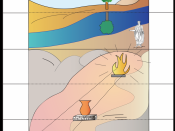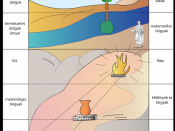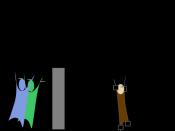Firstly, we must understand what it means by human existence. It is what it means to be or become a human, to exist and emerge in this world. It consists of many things, like choice, freedom or maybe what defines us as humans.
In the allegory of the cave, a group of people have lived in a deep cave since birth, and they have never seen sunlight or the outside world in their lifetime. They are bounded and could only see the shadows cast on the wall that the prisoners are facing, manipulated by the puppeteers. But one day, a prisoners is freed from his bonds, and he saw the statues and fire, then he is dragged out of the cave and see all the real objectsÃÂreal trees, flowers, houses and other physical objects, and when the prisonerÃÂs eyes have fully adjusted to the brightness, he saw the sun.
Plato explores the idea that the real world is an illusion in the allegory of the cave. The whole story is about how this freed prisoner made contact with real things, the statues and the fire that are inside the cave, reaching the stage of ÃÂbeliefÃÂ. But then he realized the things of greater reality which is the world beyond his cave, the real people, trees, flowers, and so on, which are ÃÂthe FormsÃÂ and finally seeing the sun, which represents the ÃÂForm of the GodÃÂ as Plato described, he has reached the highest stage of cognition ÃÂunderstandingÃÂ. The experience of this prisoner is a metaphor for the process by which rare human beings free themselves from the world of appearances and, with the help of philosophy, perceive the world truly. Fully aware of true reality, he must return to the cave and try to teach others what he...


